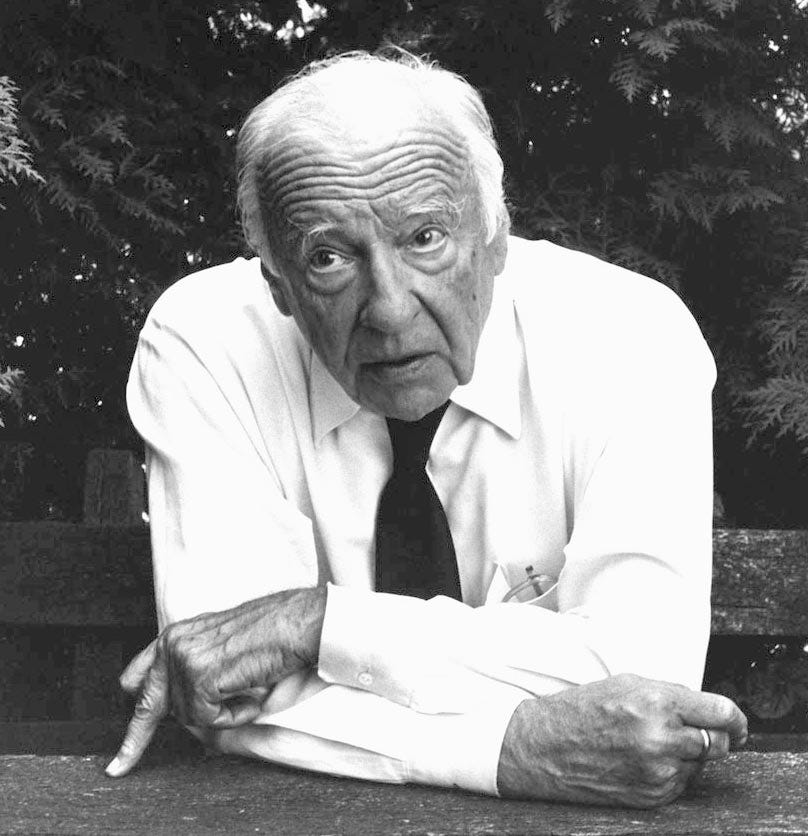A voice from the invisible graveyard
And other great things I found on the net this week
The will to power: Nietzsche was right — at the very least about goats
When what could save your life is just out of reach
Alex Tabarrok writes about how “when the FDA fails to approve a good drug, people die but the bodies are buried in an invisible graveyard.” I’d like to make that graveyard a little bit more visible because I’m going to be buried in it, in a few weeks or months. A squamous cell carcinoma tumor appeared on my tongue last September; the surgery for it occurred in October, followed by radiation in December – January, but the tumor reappeared at the base of my tongue in April. A massive surgery on May 25 appeared to produce “clean margins” (that is, no tumor cells remained where the surgeon operated), albeit at huge cost: I have no tongue any more, just a “flap” of muscle where it used to be, and no ability to swallow solid foods ever again. Monday I’m starting chemotherapy, but that’s almost certainly going to fail, because a CT scan shows four to six new gross tumors, four in my neck and two, possibly, in my lungs.
So what might help me? MRNA tumor vaccines. Head and neck squamous cell carcinomas (HNSCC) are notoriously treatment resistant, and mRNA vaccines have shown huge promise. Why aren’t they happening faster? Because the FDA is slow. There are some trials underway (here is one from Moderna; here is another), and, although I’m trying to enroll, I may be too late, since my cancer moves so aggressively. The FDA was loathe to approve initial mRNA human trials, even when those trials would have been full of people like me: those who are facing death sentences anyway.
Here is one story, from “Why the FDA Has an Incentive to Delay the Introduction of New Drugs:”
In the early 1980s, when I headed the team at the FDA that was reviewing the NDA for recombinant human insulin, . . . we were ready to recommend approval a mere four months after the application was submitted (at a time when the average time for NDA review was more than two and a half years). With quintessential bureaucratic reasoning, my supervisor refused to sign off on the approval—even though he agreed that the data provided compelling evidence of the drug’s safety and effectiveness. “If anything goes wrong,” he argued, “think how bad it will look that we approved the drug so quickly.” (41)
The problem is that delaying mRNA cancer vaccines kills people like me.
My favourite routine of my favourite standup
Tim Dunlop on Anna Funder on Eileen and George
I’ve not read Funder’s book, but, in my ignorance, recommend Tim’s review. (Tim also seems to be quite the dab hand at (is it?) Midjourney.)
“Wifedom,” Funder writes, “is a wicked magic trick we have learned to play on ourselves. I want to expose how it is done and so take its wicked, tricking power away.”
Clearly, to marry Orwell and live here will mean to abandon her studies and any possibility of an independent professional, intellectual and financial life. What kind of diffidence or masochism might lie under such a decision? Was it the standard kind, required of wives at that time, in which your own ambition was incompatible with wifedom: you could be yourself, or you could place that self in the service of another. Or did it, even for the times, go too far? Either way, there was no protecting her.
It is a worthy subject of discussion and Eileen is a perfect lens through which to concentrate the bright light Funder throws on the subject. Yes, at times, it feels a little like shooting fish in barrel, and as Rebecca Solnit writes in a recent review of Wifedom, “Being a moralist is a particularly fun and easy pursuit when it comes to the past, because pretty much everyone from the past comes up short when measured by present-day standards.”
Still, Funder maps out behaviours that even now men need to have their nose rubbed in to remind us of the violence and exploitation of women that still hold up a substantial part of our world and our privilege. Orwell was awful not because he was a monster but because he was ordinary. Wifedom, the condition, is ordinary. And it is monstrous …
I accept completely that George, in the way of so many men, takes advantage of a social contract heavily weighted in his favour to extract free labour from the women around him, particularly from his wife, and that in many ways, in any age, his behaviour towards her was unforgiveable.
Wifedom is a thing. But is that what Funder is describing here?
Every decent writer relies on a good editor, and to imply—state baldly—that what Orwell is doing is burying her involvement and taking credit for her input risks misrepresenting that professional relationship, the one between writer and editor. We have endless testimony of writer-editor relationships in which the editor’s desire—their vocation—is to be a background player, to make the work better with no intention of sharing the spotlight. Not everyone wants to be a star; some are happy to sing backup while the lead singer cavorts around at the front of the stage. …
Worse, in presenting Eileen’s role in this way, Funder robs Eileen of agency. She makes her a victim of George’s misappropriation of her labour as an editor, rather than recognising her—like so many other editors—as, perhaps, a silent contributor content with that role.…
Tim also suggests a different interpretation of Eileen’s erasure from Homage to Catalonia. To protect her from assasination.
The more I think about Wifedom—as I write this—the more I dislike it. Yes, it swept me along, but I don’t feel I can trust it. Funder is sloppy with some key facts, as other reviewers have pointed out; she mixes fact and fiction in a way that further blurs, well, fact and fiction; while her central theme of “wifedom” is fraught with definitional slippages that have the effect of robbing Eileen of the very agency the book is trying to bestow.
In the end, though, I am glad to have read it. I learned some things and was forced to think about others. Funder presents Eileen as person to be reckoned with, as someone I would wish to know more about, so all credit to her for shining a further light on a figure who until very recently was all but invisible.
Fessing up to the fudges in ESG
In this discussion with Leon Gettler I talk about the ways in which ESG (the widening of investment mandates to take into account issues to do with the Environment, Social and Governance) can be dysfunctional. For instance policies to only invest in low emissions firms are unlikely to do much good and may do harm (by starving emissions-intensive businesses with investment funds which will generally be necessary for them to reduce their emissions intensity).
I argue that investment funds should share these dilemmas with those they invest for and involve them in a process for considering the issues and deciding on an acceptable way to resolve them. How should they do it? With a jury — selected to be representative of all those they invest for.
Listen below ordownload the podcast from my spotify channel.
Clapping for Stalin, 1937
HT: Cousin Rennie Weschler.
Solzhenitsyn writes:
Here is one vignette from those days as it actually occurred. A district party conference was underway in Moscow Province. It was presided over by a new secretary of the District Party Committee, replacing one recently arrested. At the conclusion of the conference, a tribute to Comrade Stalin was called for. Of course, everyone stood up (just as everyone had leaped to his feet during the conference at every mention of his name). The small hall echoed with “stormy applause, rising to an ovation.”
For three minutes, four minutes, five minutes, the “stormy applause rising to an ovation” continued. But palms were getting sore and raised arms were already aching. And the older people were panting from exhaustion. It was becoming insufferably silly even to those who really adored Stalin.
However, who would dare be the first to stop? The secretary of the District Party Committee could have done it. He was standing on the platform and it was he who had called for the ovation. But he was a newcomer. He had taken the place of a man who’d been arrested. He was afraid! After all, NKVD [an early form of the KGB] men were standing in the hall applauding and watching to see who quit first.
And in that obscure, small hall, unknown to the leader, the applause went on—six, seven, eight minutes! They were done for! Their goose was cooked! They couldn’t stop now till they collapsed with heart attacks. At the rear of the hall, which was crowded, they could of course cheat a bit, clap less frequently, less vigorously, not so eagerly—but up there with the presidium, where everyone could see them?
The director of the local paper factory, an independent and strong-minded man, stood with the presidium. Aware of all the falsity and all the impossibility of the situation, he still kept on applauding! Nine minutes! Ten! In anguish he watched the secretary of the District Party Committee, but the latter dared not stop. Insanity! To the last man! With make-believe enthusiasm on their faces, looking at each other with faint hope, the district leaders were just going to go on and on applauding till they fell where they stood, till they were carried out of the hall on stretchers! And even then those who were left would not falter …
Then, after eleven minutes, the director of the paper factory assumed a business-like expression and sat down in his seat. And, oh, a miracle took place! Where had the universal, uninhibited, indescribable enthusiasm gone? To a man, everyone else stopped dead and sat down. They had been saved! The squirrel had been smart enough to jump off his revolving wheel.
That, however, was how they discovered who the independent people were. And that was how they went about eliminating them. That same night the factory director was arrested. They easily pasted ten years on him on the pretext of something quite different. But after he had signed the Form 206, the final document of the interrogation, his interrogator reminded him:
“Don’t ever be the first to stop applauding!”The rise and rise of the therapeutic
Philip Reiff wrote The Triumph of the Theraputic nearly 60 years ago. But its triumphs keep on keeping on.
Frances Coppola on Nigel Farage’s bank
This seems about right, but it is a pity that it doesn’t at least mention the idea that someone’s bank account might be closed (partly) because of their political views, is not a very good situation. This coming hot on the heels of access to banking acquiring a prominent role in taming political protest. It puts me in mind of the TV networks refusing to play what seemed to me to be very legitimate ads placed by GetUp.
Nigel, the truth is that Coutts closed your accounts because you are not rich enough to bank with them and you are a damn sight too risky. Why should a bank accept the extra cost that you create for them if you don’t borrow from them and don’t keep enough liquid savings with them to support their lending to other people? And why should it keep your account open when you don’t meet its published criteria, given the reputational risk and general aggravation you cause?
You haven’t been discriminated against. Your account wasn’t closed because of your “political views”. You’ve just discovered that commercial reality applies to you, and the way you behave has consequences. If you had behaved differently, you might still have your precious Coutts accounts.
No-one owes you a premier bank account, and after this tantrum, no-one is going to offer you one. Accept the high street bank account you’ve been offered. After all, that’s all that 95% of the people of this country will ever have. Why should you be treated differently from them?
Arm waving solutions to difficult problems
Here’s a Robin Hanson takedown of a book in an old genre. Here’s the book’s blurb:
era culture, in which elites dictate policy from on high, disconnected from and too often disdainful of the details of implementation. Lofty goals morph unrecognizably as they cascade through a complex hierarchy. But there is an approach taking hold that keeps pace with today’s world and reclaims government for the people it is supposed to serve. Jennifer Pahlka shows why we must stop trying to move the government we have today onto new technology and instead consider what it would mean to truly recode American government.
Sounds enticing doesn’t it?
I remember back in the (Bill) Clinton days a book fad called Reinventing Government which was all about how to — well reinvent government. Only it was, in the immortal tradition of snake oil, an incomplete instruction set. You talked about the problem. Then you told a story about how it had been solved somewhere (or someone said it had — like the New Zealand Police claimed to have written their new Police Act on a public wiki). Then you talked in general terms — perhaps you said ‘system thinking’, viewing things through a ‘complexity lens’. No that came later.
Back in the Reinventing Government days you probably talked about ‘getting out of the way’. But whatever you did, you didn’t dwell on the undoubted fact that you had a very difficult accountability problem on your hands. Governments are enormous — necessarily so under any democratically acceptable scenario — and they often need to do very difficult things. Running MyGov is difficult. Running prisons to rehabilitate criminals is much, much harder. And they’re accountable to our political process within which the buck stops at communal narcissism of one kind or another.
Anyway, if you want to sell your solution, if you want to give TED talks about it, you’d better not look to hard at this. Just go with the old formula.
Problem => anecdote => Voila. Problem solved. Walk off, dusting off your hands with a pained “Why should it be this hard?” look on your face.
Nations have at times maybe sorta made outcome-accountability work by allowing corrupt officials to make billions from their positions, positions which they lose if outcomes get bad. Sorta like how venture capital puts a fire under startup leaders. But if we just pay agency heads tiny salaries, [I’m not sure salaries are the problem. Ed]. and then give them great discretion over how to spend billions, including who to hire and fire when, then at what threshold of bad “outcomes” do we fire those agency heads? Do we really think that the politicians who oversee agencies will give remotely as much attention to this as venture capitalists? What do we do if agency heads claim to be expert and to be doing their best, but they get bad outcomes while directing billions of dollars to their associates who treat them very well after they are fired? Are we okay with that?
Pahlka doesn’t seem to believe politicians today are at all up to this task:
We know why this is difficult … Politicians don’t get reelected for simplifying and rationalizing the gargantuan maze of laws, politics, and regulations that govern service delivery. … At the same time, politicians have many many incentives to pass new laws and policies that (mostly inadvertently) wind up making delivery even harder and to publicly admonish bureaucrats for failures, which makes the bureaucracy even more risk averse. … Politicians rarely get voted out of office for failing to clear the criminal record of former felons or making it hard for the needy to access food benefits. … I worry. There are the outlines of a better path, but very few are choosing it. … Power in our government is extremely diffuse. Each federal agency makes its own independent decisions about technology development and pretty much all the other factors that go into getting implementation right. So do the states. … For the country to choose the path of digital competence … Hundreds of thousands of people in appointed and career positions across a wide variety of functions … would all need to decide to reject the status quo at approximately the same time. [But] wholesale change rarely happens so quickly. (268-73)
Thus, as far as I can tell, the only solution Pahlka sees is a huge unlikely radical revolution in how citizens hold government accountable, toward “outcome” accountability. Yet she isn’t willing to even roughly outline how that might work. She just says to hire good people (she can suggest who) and free them to do what they see as best. And then hope.
Humbugging shock!!
Dad, why did you get divorced?
Interesting article from a Republican shill
Democrats and Republicans aren’t divided by gender, they’re divided by marriage
What would it look like if a major pu
blication decided to produce a feature on masculinity but then assigned all the articles to women?
Well, it would look a lot like Politico’s The Masculinity Issue, which did exactly that.
Politico’s aversion to asking men to write about masculinity aside, one theme throughout the feature was that, in Katelynn Fossett’s words, over the last few decades, “women are voting for Democrats more, and men are usually sticking with Republicans.”
Adding marital status to the mix, the GOP advantage among married men shoots up to 20 points (59% Republican to 39% Democrat) and shrinks among unmarried men to just 7 points (52% Republican to 45% Democrat).
But what most people don’t know, including everyone who works at Politico apparently, is that among married women, Republicans still maintain a sizable 14-point advantage (56% Republican to 42% Democrat).
But if Republicans are winning married men by 20 points, married women by 14 points, and unmarried men by 7 points, then who is keeping Democrats competitive?
Single women are single-handedly saving the Democratic Party. By a 37-point margin (68% to 31%), single women overwhelmingly pulled the lever for Democrats.
This is why when President Barack Obama ran for reelection, his agenda was promoted through a slideshow that followed the "Life of Julia," documenting how Democratic programs protect and provide for her throughout her life, without a father or husband ever in the picture.
It’s why President Joe Biden followed suit with his own Linda slideshow, depicting, again, how Democratic programs protect and provide for women throughout their lives, without a father or husband ever in sight.
Clare Carlisle on George Eliot’s public voice and private life
I saw this book in the bookshop and from the blurb, a poke around in the introduction and epilogue and this review, it will be my next Audible listen.
Carlisle is a philosopher, a professor at London’s King’s College, who has previously published a biography of Kierkegaard. Though literature isn’t her bailiwick, her new book The Marriage Question is nonetheless a substantial work of literary criticism as well as one of the most captivating biographies of a literary figure I’ve read. …
Although scholarly interest keeps growing, as far as I can tell no other philosopher has been moved to write a book about Eliot. Here, in her preface, Carlisle tells us why:
When I studied philosophy at university, most of the authors I read were unmarried men: Plato, Descartes, Spinoza, Hume, Kant, Nietzsche, Wittgenstein. [Philosophers Mary Midgley and Annette Baier made the same point.] Did they regard marriage as a hindrance to the serious work of philosophy, rather than a spur to thought? My friends and I were constantly analysing relationships — our own and other people’s…
Beneath its conventional surface, marriage simmers with tensions between self and other, body and soul, passion and restraint, the poetry of romantic love and the prose of domestic routine… For better or worse, the answers we find to our marriage questions — whether to marry, how to live in a marriage, whether to remain married — are often close to the heart of our life’s meaning. Over centuries these questions have shaped religious, political and social histories.
The dash to Weimar was a momentary escape from the scandal that would dog her in Victorian England, but also served to widen her horizons further. Lewes and she were following the path “trodden by other intellectual pilgrims — Romantic radicals who worshipped… the miracle of Genius.” The genius in question was Johann Wolfgang von Goethe, the Frankfurt-born polymath poet, novelist and scientist who had settled in Weimar as a young man and remained there until his death in 1832. The couple had learned of him by reading Madame de Staël, who had taken the pilgrimage when Goethe was still alive.
With a letter of introduction from Thomas Carlyle, they attended the salon of Goethe’s daughter-in-law, befriending the composer Franz Liszt and other members of Weimar’s creative society. Lewes was halfway through his Life of Goethe, but Marian, Carlisle writes, was particularly ripe for inspiration. Moving among free-thinking artists and intellectuals in Weimar led her to wonder if she could match them.

Editing for the pulp market
Some nice science writing from Nature Materials.
In Francis Bacon’s vision of a techno-utopia New Atlantic (1626), the proto-scientific scholars of Salomon’s House, a research institution on the fictional island of Bensalem, declare that they can modify nature to their whims. “We make, by art”, they say, “trees and flower to come earlier or later than their seasons … We make them also by art greater much than their nature … of differing taste, smell, colour and figure”. It is not clear what this “art” consists of, although Bacon believed that by the systematic collection of facts about the world there was no end to what natural philosophers might achieve — a view that profoundly influenced the founders of the Royal Society several decades later.
Of course, some such art for altering the forms and natures of plants and trees need demand nothing more than the selective breeding that humans have practised for millennia. But there are limits to that. Bacon’s optimism about the capabilities of human “art” is sometimes seen now as a presentiment of our ability to transform living organisms using genetic engineering, as demonstrated in the 1970s by the use of so-called recombinant DNA techniques that use enzymes to cut and paste genomic sequences. The possibilities have been tremendously expanded with the advent of the CRISPR–Cas9 system of genome editing, which permits much more accurate targeting.
That technology is already finding its way into medicine — but it can find applications in materials science too. One promising arena is in DNA nanotechnology, where a tool for precise rewriting of the sequence information used for programmed self-assembly is full of potential1. CRISPR editing might also help in the production of biomaterials by living organisms, a striking example of which, reported by Sulis et al.2, brings us back to Bacon’s non-natural trees. The researchers have used CRISPR to alter the lignin content of wood to make it easier to process into pulp, increasing the efficiency of this industrial-scale process and reducing its environmental impact.
Lignin, the phenolic polymer that crosslinks with cellulose and hemicelluloses to give woody plants their rigidity, is composed of three monomers (the monolignol alcohols) that undergo free-radical polymerization. Turning wood into pulp for paper and fibre production demands that the lignin be broken down in a reaction that requires aggressive, typically alkaline conditions. As well as being energy-intensive, the process is rather inefficient and typically releases chemical wastes into water sources, soil and the atmosphere. Given the global scale of pulp production, a greener method of delignification is much sought after.
The solution pursued by Sulis et al. is to create trees in which less lignin is biosynthesized in the first place. To that end, they have used CRISPR to modify several of the genes involved in monolignol biosynthesis. The enzyme-mediated biosynthetic pathways are not wholly understood, so the researchers used a computational model to predict the combinatorial effects of loss of function, overexpression and other modifications of 21 key genes involved. This enabled them to find, out of tens of thousands of possible strategies, 347 that were predicted to achieve specified thresholds of lignin reduction and increases of the carbohydrate-to-lignin ratio in the wood. A sensitivity analysis narrowed these down to just seven promising strategies.
Using these options, Sulis et al. used a bacterial vector to introduce CRISPR modifications to the poplar species Populus trichocarpa, resulting in 174 distinct varieties. In some of these the lignin content was reduced by up to 49%, and the carbohydrate-to-lignin ratio increased by up to 228%. This was achieved without, in general, compromising important wood characteristics such as elasticity and density (which could make the trees fragile). There was, however, a reduction in tree growth, which might need to be addressed to make such varieties industrially viable. The researchers’ studies of pulping suggest that these changes could lower the global warming potential of the process by up to 20%.
The motivation might be very different from Bacon’s, but nothing better fits his general aspiration that scientific discovery should be driven not just by the quest for intellectual enlightenment, but also for “the relief of man’s estate”.
Gadamer: an excerpt from The German Genius
Whenever I’ve come across Gadamer, I’ve always thought he talked good, deep, rare commonsense. But also German commonsense, which means that it comes at least 100,000 words at a time. And life is too short. But here’s a passage I ran into and which I quoted in my PhD:
[O]ne does not go about identifying the weaknesses of what another person says in order to prove that one is always right, but one seeks instead as far as possible to strengthen the other's viewpoint so that what the other person has to say becomes illuminating. Such an attitude seems essential to me for any understanding at all to come about. This is nothing more than an observation. It has nothing to do with an 'appeal' and nothing at all to do with ethics. Even immoral beings try to understand one another.
So I was pleased to see him written up, in The German Genius. I learned a little more, and was glad of it. Commonsense itself. Why should it be that hard for the Frankfurt School folks? I might poke around in Truth and Method again, but that will probably be it.
The career—and thought—of Hans-Georg Gadamer (1900–2002) was very different from that of the rest of Heidegger’s children. Born in Marburg and the son of a pharmacology professor, Gadamer studied at Breslau before returning to Marburg after World War I. There his early teachers were Paul Natorp and Nicolai Hartmann, but it was Heidegger who exerted the most influence and, for a time, Gadamer worked as Heidegger’s assistant.58 “I always had the damned feeling that Heidegger was looking over my shoulder,” he said later.59
During the 1930s and 1940s, Gadamer accommodated himself, first to National Socialism and then, briefly, to Communism. He was never a member of the NSDAP, and he seems to have kept his head down, though he was later criticized for being “too acquiescent.” At the end of the war he received an appointment at Leipzig and, having been found untainted by Nazism by the American occupation forces, was made rector of the university. But Communist East Germany was not to his liking and he left, eventually succeeding Karl Jaspers in Heidelberg in 1949. To an extent, while there he tried to aid the rehabilitation of Heidegger. In 1953, with Helmut Kuhn, he founded Philosophische Rundschau, a highly influential journal, though Gadamer did not become known outside his own professional circle until the publication in 1960 of Wahrheit und Methode (Truth and Method). This established him in the eyes of many as one of the most important thinkers of the twentieth century.60
One of his starting points in Truth and Method was a series of lectures Heidegger gave in 1936 (not published until 1950), titled “Der Ursprung des Kunstwerks” (The Origin of the Work of Art). Here Heidegger introduced his concept of the “event” of truth, the “unconcealment” of truth, an idea that contrasts with the notion of truth as “correctness,” usually taken to mean some sort of correspondence between a statement and the world. Works of art have a coherence and within that coherence “a” truth is revealed, stemming from disclosure, but it is disclosure that is an interpretation, which can never be total or truly objective. We play a part in whatever we choose to understand as a truth. The influence of Kant is clear.
Gadamer took these ideas much further in Truth and Method. He said that our involvement in the event of truth is always based on our prejudices, “anticipatory structures” that we have within us and that allow, or determine, that our understanding of any truth event will be grasped in a certain way, together with “the anticipation of completeness,” another neo-Kantian notion that involves the presupposition “that what is to be understood constitutes something that is understandable, that is, something that is constituted as a coherent, and therefore meaningful, whole.”61 At the same time, history also plays a part in our understanding, says Gadamer. We are “embedded” in our particular history and cannot escape its effects. Understanding also needs another to be certain it is not mere subjectivism; new meaning emerges not by access to some “inner realm” but by the “fusion of horizons” (Horizontverschmelzung).62
Gadamer therefore concluded that the humanities, the Geisteswissenschaften, could never achieve the methodological footing of the “sciences of nature,” that such an attempt was misguided. He even thought that the natural sciences claimed too much for their method, that understanding was an ongoing process with no final completion, a stance that marked Gadamer as in the same mold as the later Wittgenstein and Thomas Kuhn. Eventually, he arrived at a model for understanding that said it was like a “conversation”: it takes place in language and each brings his or her understanding to the conversation or negotiation.
A final aspect was his exploration of culture, in particular “the relevance of the beautiful,” in which he considered “art as play, symbol and festival.”63 He thought that the meaning, or role, or function of art often got lost in the modern world, and that play—the activity of disinterested pleasure—was also overlooked.64 The symbolic role of art was to open up for us “a space in which both the world, and our own place in the world, is brought to light as a single but inexhaustibly rich totality,” where we can “dwell” out of ordinary time. The disinterested pleasure we take in art is an aid to escaping ordinary time and moving into “autonomous time.” The final quality of the successful artwork, as festival, also takes us out of ordinary time and opens us up “to the true possibility of community.”65
Gadamer engaged in two famous debates, with Jacques Derrida and with Jürgen Habermas, on whether we can ever transcend history and how this affects criticism of contemporary society, whether such criticism can ever be truly objective (and therefore what validity it can have). The debate with Derrida was inconclusive, but as a result of the other debate, Gadamer and Habermas became good friends, and the former helped secure the latter’s appointment to a professorship at Heidelberg.
https://www.jstor.org/stable/pdf/27504851.pdf?casa_token=_QRUfxWyZgoAAAAA:ZHUHgFOHxmkupwnSkjUVvRxrsGDOFligg8-k9bfu7W9hQsqv09CeheEvHjnuhGI1EjpaTIWtxEulwImIlehcp642WJo5G_cw8YVqOqJ3pI7M58xM6KI
When Philip Rieff wrote Freud: The Mind of the Moralist in 1959, he established himself as an authority in theories of psy choanalysis. In that book he examined Freud's published work, clinical as well as theoretical, in relation to its bearing on philosophy. In his new book, Rieff continues his probe of modern culture and its revolu tionizers?Freud and his successor-critics, Jung, Reich, and Lawrence?to explain the character of the therapeutic and of his cul ture. Because of the nature of his moral principles, the therapeutic is, according to the author, the basic revolutionary type of our time, cutting across all lines that divide men in the social order. He is the true un believer, the postulant of an anti-creed, us ing all faiths or none in the systematic pursuit of his sense of well-being. Rieff, who is University Professor of So ciology at the University of Pennsylvania, has given us a significant book. His pene trating analysis of philosophical implica tions for society resulting from psycho therapy will stimulate discussion. His premise goes like this: In an especially inti mate way, psychoanalysis defends the pri vate man against the demands made by both culture and instinct. Thanks to the thera peutic process primarily founded by Freud, we now have the emergence of "psycho logical man." In a sense, it is now man against society, against authority, against tradition. The psychological man, because of the freedom psychotherapy has given him, lives by the ideal of insight, which leads him to the mastery of his own per sonality. Rieff points out that the psycho analytic physician cannot direct a patient to seek relief by joining the Catholic, Prot estant, or Socialistic communities. Men must be freed from their sick communities; man's "I" must be liberated from the com munal "we." The author points out that we are in a cultural revolution; but unlike political revolution, it has been made from the top rather than from the bottom. "Our cultural revolution does not aim, like its predeces sors, at victory for some rival commitment," he writes, "but rather at a way of using all commitments, which amounts to loyalty towards none. By psychologizing about themselves interminably, Western men are learning to use their internality against the primacy of any particular organization of personality." The implications are bound to be profound. "Can the social sciences produce control devices for our future so ciety?" the author asks. He notes that psychotherapies often attach "control-release" 158 Journal of Religion and Health systems that have failed as instruments of communal purpose according to criteria set up by patient, profession, or society. The triumph of the therapeutic is a profound effort to end the tyranny of primary group moral passion, which operates first through the family. Rieff predicts that some types of psy chotherapy may become a permanent fix ture of modern culture. For instance, the new culture will be less authoritative. "The individual heart need have no reasons of its own that the corporate head cannot under stand and exploit for some augmentation of the individual's sense of well-being," he writes. Man for himself will be the primary motivation of his behavior. The emergent culture will be founded on individual self knowledge. Reiff in his book illustrates "the uses of faith after Freud." He does this by showing how Jung, Reich, and Lawrence shifted from Freudian psychoanalysis. The first three chapters analyze the relations between psychoanalysis and a theory of culture. In the following chapters, the author reviews critically the works of Jung, Reich, and Lawrence. He stresses that Jung's thera peutic psychology was primarily theologi cal?a language of faith. According to Rieff, Reich aimed at us ing psychoanalysis for revolutionary pur poses. He speaks of Reich's therapeutic method as "Reich's religion of energy." Reich's psychotherapy was primarily politi cal. In his chapter on David Herbert Law rence, Rieff discusses Lawrence's sympathy for the religious need, but primarily in symbolic or mythical terms. From the di vergence between Freud and those of his most powerful critics, C. G. Jung, Wilhelm Reich, and David Herbert Lawrence, Rieff has drawn certain implications for the or ganization of Western culture and person ality. He is primarily concerned with ex plaining cultural change. He writes that as cultures change, so do the modal types of personality that are their bearers. The battle between human nature and social order has been given a new dimension because of psychoanalysis. The therapeutic principle that man has a right to be himself frees him from the hard eternal crust of institu tional discipline. Rieff speaks of the triumph of the thera peutics, but he cautions us that "none of their doctrines promises an authentic ther apy of commitment to continental purposes; rather in each the commitment is to the therapeutic effort itself." But he points out that "the therapy of all therapies is not to attach oneself exclusively to any particular therapy so that no illusion may survive of some end beyond an intensively private sense of well-being to degenerate in a living of life itself." One may wish that the book discussed man's hunger for ideals. Rieff does not tell us clearly what some of the future cultures will be like, but they are likely to be threatening if they are the result of certain types of self-fulfillment that are released by the therapeutic. Today the goals of psycho therapy are swiftly changing, and much more attention is being paid to the role of moral values in psychoanalysis. The ulti mate values of mankind are spiritual. There is a growing recognition among therapists that these values cannot be ignored. True, we are no longer being intimidated by our culture, authority, religion, or other group forces. In this sense, there is a triumph of the therapeutic. The question we all must face seriously is: "What kind of therapy? " George Christian Anderson





















